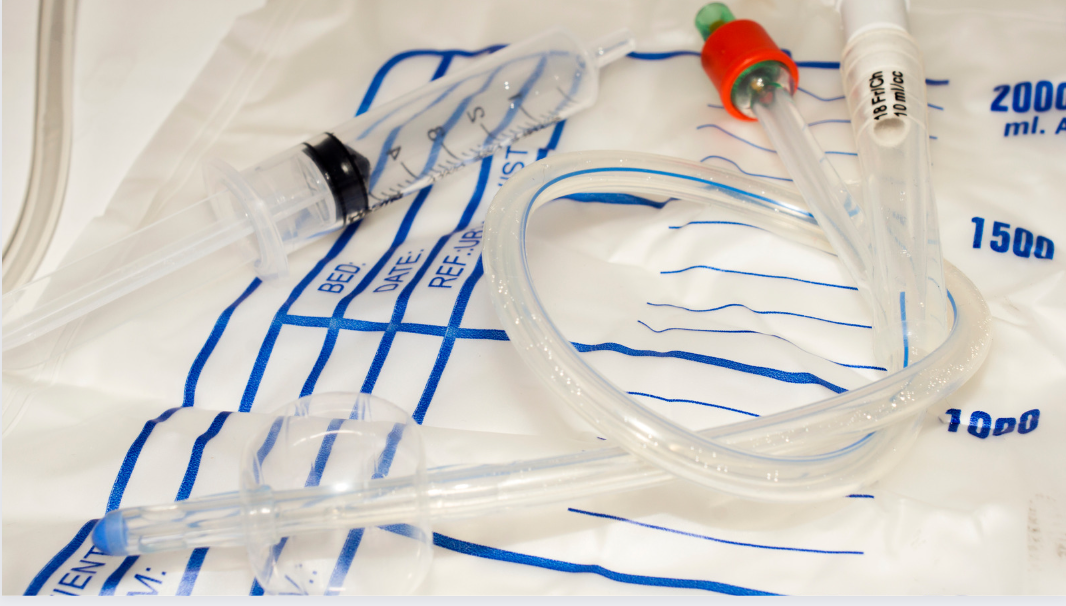
Impaired Urinary Elimination Care Plan: Best Practices and Strategies
All nursing students must familiarize themselves with impaired urinary elimination care plan. Impaired Urinary Elimination is a formidable malady characterized by an inability to expel urine or to empty the bladder fully. A range of factors, including urinary tract infections, obstructed bladder, neurological damage, certain drugs, prostate hypertrophy, and underlying medical conditions, contribute to urinary dysfunction and the accompanying discomfort.
For the effective management of this condition, creating a personalized care plan is imperative. It helps healthcare providers to identify the root cause of the condition and tailor a treatment regimen that caters to the specific needs of the patient. The care plan may incorporate a variety of interventions such as pharmacological management, catheterization, bladder training, dietary modifications, and other strategies aimed at enhancing bladder function and curbing complications.
This article aims to offer a comprehensive overview of the causes, manifestations, and diagnosis of impaired urinary elimination. Additionally, it underscores the criticality of formulating a tailored care plan for effectively managing the condition, highlighting the various components that may be integrated into a holistic plan. Furthermore, the article delves into several therapeutic interventions designed to optimize bladder function and prevent complications while promoting bladder health.
Understanding Impaired Urinary Elimination
The expulsion of waste and maintenance of fluid balance in the body are crucial functions performed by the urinary system. Malfunction of urine elimination is a condition that impedes this process and can be triggered by various factors. The etiology and indications of different kinds of urine incontinence, such as stress, urge, overflow, functional, and mixed incontinence, are not the same. Several factors that increase the risk of deficient urine elimination include age, gender, obesity, tobacco consumption, and the use of medications. Detection of signs and symptoms and receiving appropriate therapy is critical to managing the disease and averting unfavorable outcomes.
Anatomy and Physiology of the Urinary System
The urinary system, also known as the renal system, is a complex arrangement composed of two bean-shaped organs, the kidneys, alongside the ureters, bladder, and urethra. Its primary function involves the removal of waste products from the body while keeping the fluid balance in check. Located on either side of the spinal column, the kidneys filter excess fluid and waste materials from the bloodstream, generating urine.
This excremental fluid is then transported by two robust tubes called ureters, which move it towards the bladder, a hollow, muscular sac designed to accumulate urine until it’s ready to be expelled from the body through the urethra, a tube-like structure that connects the bladder to the external world. Such information is critical for nursing students if they want to develop impaired urinary elimination nursing diagnosis nursing.
Causes and Types of Impaired Urinary Elimination
Impaired urinary elimination is a medical condition that obstructs the capacity to fully empty the urinary bladder or discharge urine. Urinary tract infections, bladder blockage, nerve impairment, specific medications, enlarged prostate, and fundamental medical ailments can all be contributing factors. The types of deficient urine elimination include stress incontinence, urge incontinence, overflow incontinence, functional incontinence, and mixed incontinence. Nursing diagnosis impaired urinary elimination care plan is critical in helping patients with the disorder.
Stress incontinence is a result of diminished pelvic musculature which fails to maintain the urinary bladder during times of increased pressure, such as when coughing or sneezing. On the other hand, urge incontinence is marked by intense desires to urinate that result in uncontrolled urinary discharge. Overflow incontinence is distinguished by an inability to completely void the urinary bladder, resulting in a continuous trickle of urine. Functional incontinence arises when physical or cognitive impairment restricts the individual from using the bathroom in a timely manner, whereas mixed incontinence is a combination of multiple types of incontinence. This can be obtained from NANDA nursing diagnosis related to impaired urinary elimination care plan prepared by nurses to help patients.
Risk Factors for Developing Impaired Urinary Elimination
A sundry of factors can elevate the propensity of acquiring substandard urine elimination. Due to the degeneration of the musculature and nerves that manage the urinary bladder’s operation with the advancement of time, this represents a substantial jeopardizing aspect. Additionally, females are more susceptible to incontinence due to the ramifications of gestation, parturition, and menopause. Notably, adiposity, nicotine consumption, prolonged constipation, and certain pharmacological substances like diuretics and sedatives can all engender an elevation in the risk of experiencing urinary dysfunction. Nursing students need reliable Impaired Urinary Elimination Care Plan and Nursing Diagnosis Writing Help to assist them in developing exceptional impaired urinary elimination care plans.
Symptoms and Complications of Impaired Urinary Elimination
Impaired urinary elimination is denoted by the presence of difficulties in the expulsion of urine, increased frequency of urination, weakened urine stream, and the necessity to strain while voiding. Incontinence can also be a manifestation of the condition, leading to the involuntary leakage of urine during activities such as laughing, coughing, or exercising. Complications that can arise from inadequate elimination of urine include skin irritation and infections, urinary tract infections, and renal impairment.
Assessment and Diagnosis
Impaired urinary elimination necessitates a multifarious array of measures encompassing physical scrutiny, laboratory investigations, imaging analyses, and documentation of the patient’s indications and medical past. Furthermore, involving the patient in the evaluation and diagnosis procedures is crucial in ensuring that they comprehend the ailment and can judiciously elect their preferred therapeutic choices. Healthcare providers can efficaciously manage and treat impaired urine elimination by adopting a comprehensive and patient-oriented strategy towards examination and diagnosis.
Primary Assessments
There are several ways to assess the decrease in urine excretion depending on the underlying etiology of the condition. The use of a bladder diary, which involves monitoring the patient’s fluid consumption, urination frequency, and volume of pee generated over several days, is one popular technique. This recorded data can be examined to find patterns and possible impairment sources.
Urodynamic testing, which involves measuring the flow and pressure of urine as it travels through the urinary tract, is another strategy. This method can be useful in locating any obstacles or other issues that might be causing the hindered excretion.
Physical Examination, Lab Tests, and Imaging Studies
Impaired urine elimination is frequently diagnosed through a confluence of somatic inspection, analytic tests, and visual examinations. When performing a somatic assessment, the medical professional will diligently search for indications of contamination, such as pyrexia or lumbosacral pain. They may also execute a gynecological evaluation to inspect any aberrations in the vesica or urinary tract.
Among the array of analytic tests that may be conducted, urinalysis can facilitate the revelation of any indications of infection or other abnormalities present in the urine. Furthermore, blood testing may be mandated to exclude any underlying medical conditions that could be inducing the decreased elimination.
Imaging examinations, such as ultrasound, computed tomography (CT) scan, or magnetic resonance imaging (MRI), may also be conducted to visualize the bladder and urinary system to identify any constrictions or other abnormalities that may be contributing to the impairment.
Documenting Symptoms and Medical History
Documenting the patient’s symptomatic manifestation and comprehensive medical history, alongside a meticulous physical examination and lab analysis, is of utmost importance in detecting a delayed expulsion of urine. It is imperative to observe and meticulously document indications such as urinary difficulty, tenderness or unease during urination, as well as frequent urination. Moreover, any underlying medical comorbidities, medications, or lifestyle factors that might be inducing the hindrance should be reported without fail.
Involving the Patient in the Assessment and Diagnosis Process
It is of utmost importance to involve the patient in the assessment and diagnosis of impaired urine elimination. To achieve this, it is recommended to initiate a dialogue with the patient regarding their medical history and symptoms. This can be followed by presenting alternative methods for evaluation and diagnosis, and encouraging the patient to provide feedback and pose inquiries. By involving patients in this process, healthcare providers can ensure their comprehension of the condition and the treatment options available to them.
Developing a Care Plan
A complete impaired urinary elimination care plan should incorporate a variety of components, such as medication management, lifestyle adjustments, and bladder retraining. To provide the best potential outcomes, the care plan should be personalized to the patient’s unique needs and preferences, and it should be periodically checked and updated as needed. Healthcare providers can help patients with impaired urine elimination manage their illness and enhance their quality of life by taking a patient-centered and holistic approach to care planning.
Goals and Objectives of a Care Plan for Impaired Urinary Elimination
A comprehensive plan to address impaired urinary elimination must seek to identify and target the root cause of the obstruction, improve bladder function, prevent complications, and enhance the patient’s overall quality of life. The plan’s ultimate goals may include facilitating complete bladder emptying, decreasing urinary frequency, minimizing the likelihood of infection or other adverse outcomes, and optimizing bladder health in general.
Components of a Care Plan
Depending on the patient’s distinctive necessities and the underlying etiology of the dysfunction, a comprehensive management strategy for urinary elimination deficit may encompass a diverse array of components. Management of pharmacological agents, modifications in lifestyle, and reconditioning of the bladder musculature are typical constituents of a remedial approach.
Medication Management
The administration of medication therapy may encompass the utilization of antibiotics in order to attend to an underlying infection, as well as the application of pharmacological agents that have the potential to alleviate tension within the bladder or curtail inflammation. The proficient dispensation of medicinal drugs will be dictated by the healthcare professional who is acting in accordance with the symptomatic presentation and medical history of the patient in question.
Lifestyle Changes
Changes to one’s dietary habits with the goal of restricting bladder irritants like caffeine, alcohol, and zesty edibles constitute examples of improving one’s way of life. To mitigate the danger of contamination, patients might be advised to restrict their fluid intake prior to retiring for the night and to adopt rudimentary hygienic habits. Patients could gain from engaging in exercises to strengthen the pelvic floor or from undergoing alternative forms of physiotherapy to enhance the performance of the bladder. This is especially critical when developing personalized and standard nursing care plans. With the relevant nursing diagnosis writing help, nursing students can understand how to develop NANDA nursing diagnosis related to impaired urinary elimination.
Bladder Retraining
Bladder retraining is a gradual process of augmenting the span amid urinations, which leads to enhancing the bladder’s ability to withhold more urine. There are several ways to approach bladder retraining, such as creating a schedule for urination, steadily escalating the intervals between urinations, and employing relaxation methodologies to alleviate anxiety or discomfort brought about by the urge to urinate. This is a critical concept and should always be included in an Impaired Urinary Elimination Care Plan for all patients.
Tailoring the Care Plan to the Patient’s Needs
The development of a personalized care plans is crucial to satisfy the specific needs and preferences of each individual patient. This process entails a comprehensive examination of diverse aspects, including the patient’s chronologic age, medical past, lifestyle, and any pre-existing ailments. For example, an older patient may necessitate more frequent observation and adjustments to their healthcare plan, whereas a patient with a history of renal illness may require more aggressive therapeutic interventions to avoid complications.
Monitoring and Adjusting the Care Plan
In order to properly manage the condition, the care plan for inadequate urine excretion must be monitored and modified. In order to monitor the patient’s progress, alter the treatment plan as needed, and avoid any consequences, it is vital for the healthcare provider and patient to have regular consultations. The degree of the patient’s impairment and the underlying etiology will determine how many follow-up appointments are necessary. For instance, a patient with a urinary tract infection might need more regular follow-ups to assess the effectiveness of the medication and confirm that the infection has resolved.
On the other hand, once the initial course of treatment has been set, a patient with a persistent condition like an enlarged prostate might need fewer follow-up visits. During the patient’s follow-up appointments, the healthcare professional may do additional diagnostic tests or imaging investigations to assess the patient’s bladder function and identify any potential new problems. For example, a bladder ultrasound can be used to measure the volume of leftover pee after urinating or find any abnormalities in the bladder wall.
The healthcare provider may also alter the treatment strategy in light of the patient’s development and any fresh issues that may appear. The medical practitioner may change the medicine dosage or suggest alternative therapies like pelvic floor exercises or bladder retraining if the patient does not respond well to medication or lifestyle changes.
Implementation and Evaluation
Behavioral Therapy
Behavioral therapy presents an efficacious modality for managing urinary incontinence. This method involves modifying the patient’s behavioral and lifestyle patterns with the aim of optimizing bladder control. Behavioral therapy incorporates a variety of techniques, including timed voiding, fluid management, and bladder training. Bladder training is a method whereby the patient allocates specific times for voiding and gradually increases the interval between each voiding episode.
Timed voiding, on the other hand, refers to scheduling predetermined bathroom breaks at regular intervals in order to prevent urinary accidents. Fluid management, the third behavioral therapy technique, involves regulating fluid intake while avoiding bladder irritants such as caffeine and alcohol. With a proper Impaired Urinary Elimination Care Plan a patient can successfully alter their behavior to facilitate rapid recovery.
Pelvic Floor Exercises
Kegels, or exercises targeted towards the pelvic floor musculature, are a highly salubrious modality to combat urinary incontinence. By alternating contractions and relaxations of the muscles surrounding the bladder and urethra, the pelvic floor receives the reinforcement necessary to bolster its supportive functions. This can augment the patient’s capacity to regulate the bladder and diminish the probability of inadvertent leakages. While pelvic floor exercises can be conveniently performed in the comfort of one’s abode, a fastidious execution is paramount to maximize the treatment’s benefits. By incorporating such exercises within NANDA nursing diagnosis related to impaired urinary elimination, patients can fully recover from their ailments.
 Medication
Medication
Pharmacological intervention stands as another course of action for those who suffer from urine incontinence. In order to abate bladder spasms and augment bladder capacity, anticholinergic agents are commonly employed. Additionally, mirabegron serves as an alternative medication that may be utilized to ease and widen the bladder. However, it is imperative to exercise caution when administering medication as it may elicit symptoms such as parched oral cavity, bowel obstruction, and unclear eyesight. Consequently it must be included within an Impaired Urinary Elimination Care Plan.
 Educating Patients and Caregivers
Educating Patients and Caregivers
Patient and caregiver education plays a pivotal role in the prosperous implementation of the care plan. Patients must be enlightened about the sundry interventions encompassed in their nursing care plan, and also the proper execution of pelvic floor exercises and the indispensability of compliance. In the same vein, caregivers must also undergo training on how to assist patients with their care plans, how to detect indications of infection or other complications, and when to seek medical attention.
It is of paramount importance that patients comply with the care plan to ensure its effectiveness, and they must be made aware of the significance of adhering to the plan. Patients must be cautioned that the treatment plan is not a quick panacea, and the results may not manifest instantly. It is also crucial to encourage children to pose questions and voice their concerns to their doctor. This is helpful in creating proper Impaired urinary elimination nursing diagnosis for the patients.
Evaluating the Effectiveness of the Care Plan
 Patient Feedback
Patient Feedback
Patient input serves as a vital instrument in gauging the efficacy of a healthcare regimen. The patient’s indications, the frequency and intensity of instances of incontinence, and any variations in their standard of living should all be deliberated. Furthermore, patients must be probed regarding their adherence to the healthcare plan in addition to any complications they have encountered. Impaired Urinary Elimination Care Plan
 Objective Measures
Objective Measures
Objective measures, such as urodynamic testing and bladder scans, can also be used to evaluate the effectiveness of the care plan. Urodynamic testing measures bladder pressure and urine flow to assess bladder function. Bladder scans can measure the amount of urine left in the bladder after voiding. These tests can help healthcare providers determine whether the care plan is effective or whether modifications need to be made.
Culture and Ethical Considerations
Several criteria and considerations must be made while creating a treatment plan for a patient whose urinary system is damaged. Among these factors are cultural and ethical considerations. It is crucial to take both ethical and cultural factors into account when creating a care plan. It is crucial to uphold each person’s autonomy, dignity, and rights. For instance, people have the right to knowledge about their treatment alternatives and the right to refuse therapy. Also, it is crucial to maintain a person’s privacy throughout any medical procedures or treatments.
Also, it is important to take into account any potential language problems between the patient and the medical staff. To ensure that the patient fully understands their diagnosis and available treatments, an interpreter may be required if they are not fluent in the language used by the medical staff.
The success of the care plan depends on ongoing monitoring and reevaluation. To evaluate the success of the therapies and make any necessary adjustments, patients should undergo routine monitoring. Appointments for follow-up should be made frequently to check on progress and offer support and instruction.
To sum up, if you are a student having difficulty creating an Impaired Urinary Elimination Care Plan, do not fear! The website NursingEssayWriters.net can help. You can receive individualized, one-on-one coaching from our experienced tutors to help you create a successful treatment plan. Thus, visit nursingessaywriters.net right away to schedule a tutoring session with one of our experienced tutors if you are prepared to ace your Impaired Urinary Elimination Care Plan. A paraphrase is a phrase that helps you do something.
FAQ
What are the nursing interventions for urinary retention?
1. Behavioral Therapy
2. Bladder Retraining
3. Pelvic Floor Exercises
4. Lifestyle Changes
What is a common urinary elimination problem?
A commonplace issue related to urinary elimination pertains to difficulty or pain when urinating, which is oftentimes indicative of a urinary tract infection (UTI) or bladder infection. Incontinence (an inability to control urination), frequent urination, the urge to urinate, and complications starting or stopping the flow of urine are all commonly encountered urinary elimination disorders. These symptoms may be ascribed to a variety of underlying disorders, such as bladder or kidney stones, prostate problems in males, and neurological conditions that impact the urinary system and bladder. If you exhibit any of these symptoms, it is imperative that you schedule an appointment with a medical practitioner to obtain a thorough diagnosis and proper treatment.